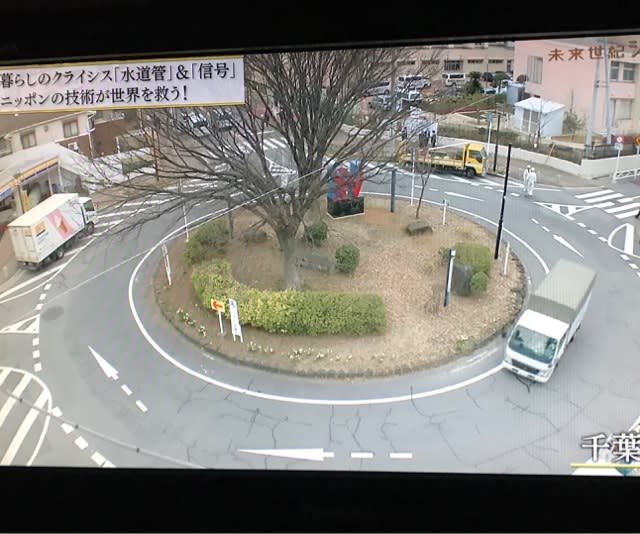よし、5〜7月の懸案事項や各種行事も、綱渡り的な出たとこ勝負で、周囲の皆さんにお世話になりながら、なんとか無事に終えたので、横浜市の「がん検診」を受けよう。

ところで、厚生労働省は喫煙者率を下げるため、やっきになっていますし、来年の東京オリンピック・パラリンピックにむけ、各自治体での喫煙規制が強化されています。
その根拠は、「たばこが健康を害し、がんの原因である」から、徹底的に喫煙者率を限りなくゼロにもっていこう、ということです。しかし、私は「がん検診率」がいっこうに向上していない現状こそ、早急に解決すべき問題ではないか、と前々から思っています。
つまり、厚生労働省や各自治体がとりくむべきは、すでに先進国並みの水準にある喫煙者率をさらに下げることではなく、「がん検診の受診率」を先進国並みにあげることではないか、と確信しています。以下、厚生労働省と国立がんセンターの現状認識をご紹介しますが、さて改善するにはどうしましょう、ということですね。
【厚生労働省】平成28年に実施された「国民生活基礎調査」によると、日本のがん検診受診率は、男性においては、胃がん、肺がん、大腸がん検診の受診率は4〜5割程度であり、女性においては、乳がん、子宮頸がん検診を含めた5つのがん検診の受診率は3〜4割台となっています。
特に子宮頸がん、乳がんについては、検診受診率が低い状況にあります。
【国立がんセンター】イギリスや北欧などでは、国策として乳がん検診・子宮頸がん検診・大腸がん検診が組織型検診により行われており、高い受診率を維持しています。一方、アメリカでは任意型検診が主体ですが、高い受診率を維持しています。乳がん検診・子宮頸がん検診については、イギリス・アメリカと比較して、わが国の受診率は2分の1程度です。
Okay, I've managed to finish the pending matters and various events from May to July with the help of everyone around me, walking on a tightrope, and I'm going to get a 'cancer screening' by the City of Yokohama.

ところで、厚生労働省は喫煙者率を下げるため、やっきになっていますし、来年の東京オリンピック・パラリンピックにむけ、各自治体での喫煙規制が強化されています。
その根拠は、「たばこが健康を害し、がんの原因である」から、徹底的に喫煙者率を限りなくゼロにもっていこう、ということです。しかし、私は「がん検診率」がいっこうに向上していない現状こそ、早急に解決すべき問題ではないか、と前々から思っています。
つまり、厚生労働省や各自治体がとりくむべきは、すでに先進国並みの水準にある喫煙者率をさらに下げることではなく、「がん検診の受診率」を先進国並みにあげることではないか、と確信しています。以下、厚生労働省と国立がんセンターの現状認識をご紹介しますが、さて改善するにはどうしましょう、ということですね。
【厚生労働省】平成28年に実施された「国民生活基礎調査」によると、日本のがん検診受診率は、男性においては、胃がん、肺がん、大腸がん検診の受診率は4〜5割程度であり、女性においては、乳がん、子宮頸がん検診を含めた5つのがん検診の受診率は3〜4割台となっています。
特に子宮頸がん、乳がんについては、検診受診率が低い状況にあります。
【国立がんセンター】イギリスや北欧などでは、国策として乳がん検診・子宮頸がん検診・大腸がん検診が組織型検診により行われており、高い受診率を維持しています。一方、アメリカでは任意型検診が主体ですが、高い受診率を維持しています。乳がん検診・子宮頸がん検診については、イギリス・アメリカと比較して、わが国の受診率は2分の1程度です。
By the way, the Ministry of Health, Labour and Welfare (MHLW) is working hard to reduce the smoking rate, and smoking restrictions are being tightened in each municipality in preparation for the Tokyo Olympics and Paralympics next year.
The rationale behind this is that smoking is harmful to health and a cause of cancer, and that we should thoroughly reduce the smoking rate to as low as possible.
However, I have long thought that the current situation where the 'cancer screening rate' has not improved at all is a problem that needs to be solved urgently.
In other words, I am convinced that the Ministry of Health, Labour and Welfare (MHLW) and local governments should not work to further reduce the smoking rate, which is already at the same level as in developed countries, but to increase the cancer screening uptake rate to the same level as in developed countries.
Below are the current perceptions of the Ministry of Health, Labour and Welfare (MHLW) and the National Cancer Centre, and now what we should do to improve it.
According to the National Cancer Survey conducted in 2008, the cancer screening uptake rate in Japan is around 40-50% for stomach, lung and colorectal cancer screening among men, and 30-40% among women for five types of cancer screening, including breast and cervical cancer screening.
The screening uptake rate for cervical and breast cancer is particularly low.
In the UK and Scandinavia, breast, cervical and colorectal cancer screening is conducted by organised screening as a national policy, and high screening uptake rates are maintained. In the USA, on the other hand, voluntary screening is the main method, but a high uptake rate is maintained. The uptake rate of breast and cervical cancer screening in Japan is about one-half that of the UK and the USA.























